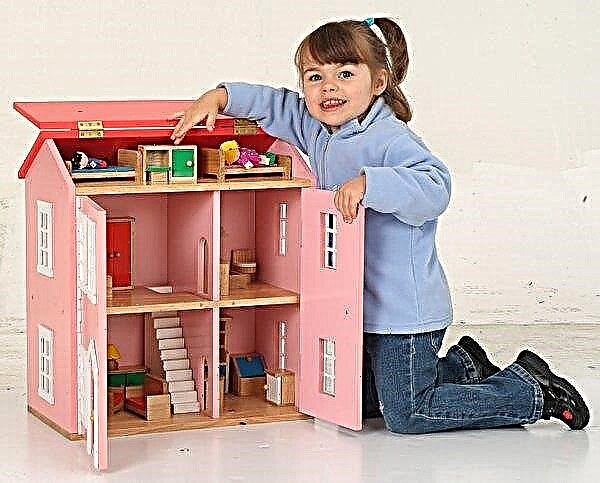Stool color and consistency in newborn babies is one of the most important indicators of health. Babies poop 6-8 times a day, this makes it possible for parents to immediately notice any irregularities in the stool and seek advice from a pediatrician. To do this, you need to know which stool is considered normal for infants, and which one indicates deviations and that you need to urgently call a doctor.

Feces pampers
What is the normal stool for babies
For infants on HB, a variant of the norm will be feces of this color: yellow with small white lumps, deep yellow, brownish-yellow, yellow-golden. It should be borne in mind that with mixed or artificial nutrition, as well as with the appearance of the first complementary foods, the color of the feces will acquire a darker color. In the year, the child's poop turns dark brown.
Mom does not need to worry too much if she finds green feces in the baby - this is also normal. Green kaki can be found in newborns if they contain bilirubin or biliverdin.
Parents should be aware that in an infant, bilirubin tends to be excreted in stool up to six or even nine months. That is why such feces in this age interval can be considered absolutely normal.
Also, do not worry if the stool is yellow, and after a while it turns green. This means there is bilirubin in the stool.
Note! If the baby's feces were yellow for several weeks, and then turned yellow with greenish streaks, this may be a symptom that the nursing mother does not have enough milk. Also, such changes may indicate that the child has a functional digestive disorder or the development of any pathologies.

Baby chair
Newborn stool in the early days
From the first minutes of life and up to three days in the large intestine, the newborn accumulates the remnants of amniotic fluid that got into the tiny body during birth: intestinal epithelium, bile, mucus and more. This chair is called meconium.
In a baby's diaper, a mother can find black, auburn or olive discharge that has a viscous structure and does not have any smell at all. Such bowel movements in a newborn baby are not bacterial in nature.
The appearance of discharge is the first sign of why the gastrointestinal tract began to function correctly. Within two to three days after birth, the body of the newborn fully assimilates all the colostrum that it sucks from the mother's breast, so the feces are not formed during this period.

Meconium in newborns
Color change with age
Starting from the fourth day after birth, and up to the sixth day, the functioning of all organs of the gastrointestinal tract is improving, which is associated with a new diet in the form of breast milk and the appearance of bacteria in the intestines. During this period, the feces have a mushy structure and yellow with small blotches of green. It is not considered a deviation if the stool is white or with little mucus. All changes in color or consistency occur due to the effects of various bacteria in the digestive tract. The stool becomes dark green with a slight gray tinge, the consistency is mushy.
At first, the child poops up to 10 times a day. As his intestines become accustomed to his mother's milk, the frequency of bowel movements will decrease to 1-2 times within 3-7 days. This is due to the fact that the baby's intestines completely absorb all the necessary substances from breast milk.
From the second week of life to 28 days, the newborn's stool becomes light brown. The consistency is mushy. Green poop in a baby or constipation will indicate that there are some abnormalities.
During the first months of life, when the baby is exclusively on HB, green stools are considered the norm. Feces of the crumbs can be light brown, grayish and even green. Like a month-old baby should be neither liquid nor solid. After a year, the stool becomes thicker.
Additional Information. A different color and density of feces is not a sign of disorders, provided that breastfeeding is organized correctly, the baby is in good health and has sufficient weight gain.

The diaper is changed for the child
Green chair for EB
Green stools in breastfed babies can occur due to the fact that:
- Under the influence of oxygen, chemical oxidative processes take place;
- As a result of difficult childbirth, the baby developed inflammatory processes in the stomach and intestines;
- Bilirubin is excreted from the child's body;
- The child has hypolactasia (lactose intolerance), dysbiosis;
- The endocrine system is poorly functioning;
- There was a failure in the functioning of the digestive tract;
- A breastfeeding mother consumes a lot of green vegetables and herbs;
- The baby all the time sucks out only the front milk, which is low in fat and a lot of easily digestible carbohydrates.
Green kakuli in babies can also occur if mom or dad does not change a dirty diaper in a timely manner. In this case, some of them manage to lie in the air for some time and oxidize.
Green stools in breastfed babies can appear for the following reasons:
- Intoxication of the mother's body due to poisoning;
- Influence of medications used by a nursing mother;
- Not enough milk in the breast.
Green feces in babies for gv are the main reasons:
- The nutritional value and composition of mother's breast milk;
- Early application of complementary foods;
- Abnormalities in the baby's immune system;
- Changes as the child grows up.
What to do if the stool is green
If a newborn has green poop, what should mom do:
- Correctly attach the baby to the breast, allow him to fully saturate and complete the feeding process on his own;
- Observe the mode of attachment to the breast on demand;
- Control the diet, refuse any additives, exotic food;
- Treat disturbances in the child's gastrointestinal tract only under the supervision of a doctor.
Important! Green stools in combination with other unpleasant symptoms are a reason to see a doctor.
When a green chair is an alarm
Mom and Dad should be alerted by this condition of the child:
- Foamy green stools;
- Frequent urging and bad stool odor. The kid is capricious, lethargic, does not eat well;
- There is mucus in the stool, and the general condition of the baby has worsened;
- Blood, blood clots, mucus are visible in the feces.
Parents should urgently seek medical help if the discharge of green feces in a child is accompanied by the following symptoms:
- Decreased mobility, drowsiness, moodiness appeared;
- Decreased appetite;
- Stools bright, frothy, and offensive;
- Diarrhea more often than ten times a day;
- Blood in the stool
- The diarrhea is green with a lot of mucus.
Shade and consistency of green stool
The color and density of green feces will help you find out about the reasons for such changes:
- Liquid stool of dark green color - a consequence of hypolactasia;
- With lactase deficiency, when breast milk is not fatty enough, a green foam appears in the feces;
- Light green - lactation is disturbed or a small amount of rear fatty milk;
- If the functioning of the digestive tract is impaired, the feces become black and green;
- Gruel-like stools are the norm;
- Green slimy stools - abnormalities in the digestive tract;
- Very thin or too hard stool - the development of a disease.

Fecal shades in children
Alarming symptoms
- The baby is restless, often capricious, lethargic;
- The child has a poor appetite;
- No weight gain;
- Foamy stools, watery;
- Feces have a putrid, sour, fetid odor;
- The baby has bloating and colic. Poops more than 15 times a day;
- There are streaks of blood in the stool;
- The body temperature rose, nausea and vomiting began;
- Rash on the skin.
Green foamy stools in babies
If a baby has a swampy green stool with a very unpleasant odor, it means that he does not have enough milk, or the feeding process itself is disrupted.
Important! It is necessary to monitor the baby, if there is a green foamy stool for more than five days, consult a pediatrician for advice in order to start treatment faster.
What to do with green stools
If the mother sees green kuli in the baby, and there are no other accompanying symptoms, you can do this:
- Observe all the rules for latching a newborn to the breast. When the baby is sucking, there is no need to rush him, he must drink all the rear milk.
- Do not include in your diet foods with preservatives, colors and flavor enhancers. Also, do not use spices during cooking.
- Feed the baby on demand.
Green stool in a newborn with hepatitis B is not always a deviation. If the toddler develops correctly, behaves cheerfully and actively, do not worry once again, contact the doctor. If there are alarming symptoms, you need to seek medical help as soon as possible.



